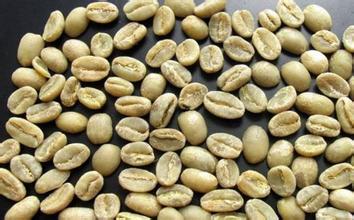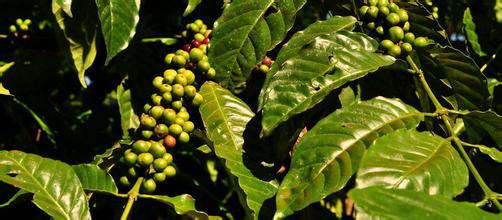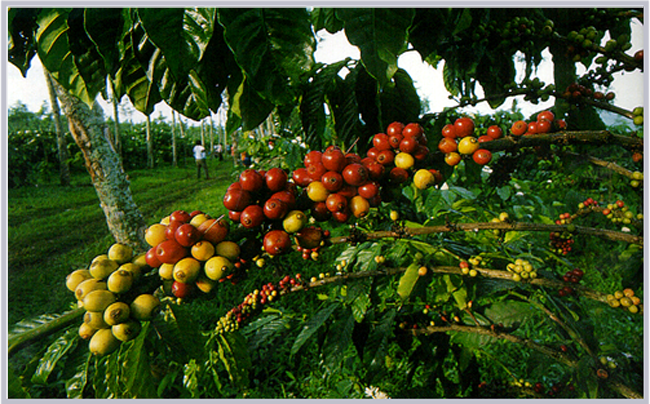Detailed Analysis of four cultivation Systems in Coffee producing areas of Ethiopia
Forest coffee (Forest Coffee): wild coffee, which accounts for 10% of Ethiopia's national output, is distributed in the wild coffee forest areas of the west and southwest, also known as the Kafa forest. The dense trees here provide the most natural shade for coffee trees and do not need manual care. Mother Earth is in charge of birth, aging, sickness and death, and coffee farmers can go directly to the woodland to harvest.
Semi-forest coffee (semi-Forest Coffee): refers to semi-wild coffee, also distributed in the following order: Brazil, Vietnam, Colombia, Indonesia, Ethiopia, India, Peru, Mexico, Guatemala. In the western and southwestern Cafa forests, accounting for 35% of Ethiopia's coffee production. In order to increase the yield, the farmers of the forest coffee system will each choose a small piece of wild woodland and artificially trim the branches and leaves that are too dense to balance shade and sunlight, assist coffee trees in photosynthesis and growth, and weed once a year to increase coffee production. In other words, the system uses a semi-natural and semi-artificial way to cultivate coffee trees.
Pastoral Garden coffee: farmers plant coffee trees in their backyards or fields and mix them with other crops. Although the density of coffee trees is the lowest, with only 1000 to 1,800 trees per hectare, it is the most popular because the hybrid method best meets the livelihood needs of farmers and is currently the main mode of cultivation of coffee in Ethiopia. The small-scale farming system of pastoral coffee is mainly distributed in Sidamo and the southeast in the south. The coffee output of this system reaches 50% of Ethiopia and is getting more and more attention. The government is vigorously promoting the cultivation of pastoral coffee.
Cut-farm coffee (PIantation Coffee): most of them are state-run coffee farms, but in order to improve efficiency, they have been allowed to resell them, hoping to complete the privatization operation as soon as possible. This system adopts modern agronomic management, and there are regulations on fennel breeding, pruning, fertilization, spraying, planting density and so on. It is the only non-organic cultivation method at present, but it only accounts for 5% of the national annual output.
From the above four systems, it can be seen that, unlike the high-efficiency cultivation of enterprises and science and technology in Central and South America, most of Ethiopian coffee is mixed with wild and artificial varieties, so it is not easy to increase the yield. But Egyptian agricultural experts are not discouraged and are already cultivating high-yield, high-quality Arabica mixed-race coffee trees, hoping to narrow the yield gap with Central and South America.

Source: cat's nest coffee
Important Notice :
前街咖啡 FrontStreet Coffee has moved to new addredd:
FrontStreet Coffee Address: 315,Donghua East Road,GuangZhou
Tel:020 38364473
- Prev

World Boutique Coffee Manor: Ecuador Ecuador Manor History and Coffee Flavor Introduction
Arabica coffee trees were first introduced to Ecuador in 1952, and their coffee quality is very good, especially when harvested in early June. Ecuadorian coffee beans can be divided into Galapagos (Galapagos) and Gigante (Gigante) two varieties, both have large particles, heavy portions of characteristics. Ecuadorian coffee can be divided into No.1 and Extra Superior according to quality.
- Next

Coffee Estate Knowledge Points: Collection and classification of world boutique coffee estates in detail
Coffee comes from coffee beans, which are harvested and processed from the fruits of trees. Coffee trees grow at the equator as the center, between 25 degrees north and south latitude, known as the coffee belt in tropical or subtropical countries home, coffee beans are currently. Coffee comes from coffee beans, which in turn are harvested and processed from the fruits of trees. Coffee trees grow at the equator.
Related
- Does Rose Summer choose Blue, Green or Red? Detailed explanation of Rose Summer Coffee plots and Classification in Panamanian Jade Manor
- What is the difference between the origin, producing area, processing plant, cooperative and manor of coffee beans?
- How fine does the espresso powder fit? how to grind the espresso?
- Sca coffee roasting degree color card coffee roasting degree 8 roasting color values what do you mean?
- The practice of lattes: how to make lattes at home
- Introduction to Indonesian Fine Coffee beans-- Java Coffee producing area of Indonesian Arabica Coffee
- How much will the flavor of light and medium roasted rose summer be expressed? What baking level is rose summer suitable for?
- Introduction to the characteristics of washing, sun-drying or wet-planing coffee commonly used in Mantenin, Indonesia
- Price characteristics of Arabica Coffee Bean Starbucks introduction to Manning Coffee Bean Taste producing area Variety Manor
- What is the authentic Yega flavor? What are the flavor characteristics of the really excellent Yejasuffi coffee beans?

